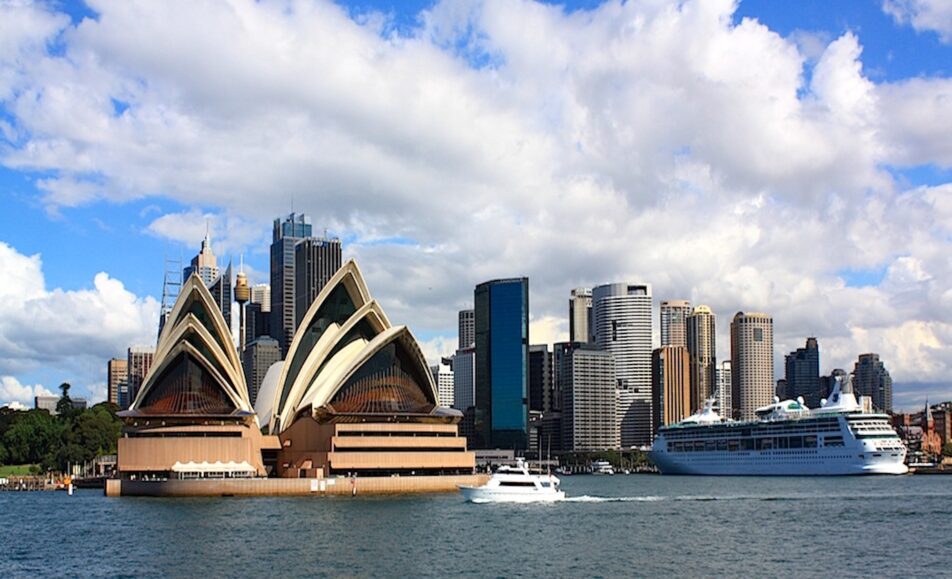
Merchandise trade : Following a global demand slowdown in the second half of this year, global and regional real merchandise trade growth is expected to be limited in 2022. Global real exports and imports are forecasted to grow by just 3.7% and 3.9%, respectively. Asia-Pacific real exports (excluding the Russian Federation) are expected to grow 3.0%, while imports will contract by 0.3%. Nominally, merchandise trade in Asia and the Pacific in 2022 is forecasted to total US$ 19.0 trillion in 2022.
In 2023, regional merchandise trade is expected to continue growing modestly. Nominal exports and imports growth (excluding the Russian Federation) is forecasted to reach 1.9% and 2.5%, respectively, and 1.6% and 0.7% in real terms, respectively. These estimates assume that inflation will be effectively curbed during the next year. Downside risks such as the potential re-emergence of COVID-19 lockdowns, the evolution of the war in Ukraine and risks of a global economic recession loom and add a considerable amount of uncertainty to current estimates.
Inflationary pressures have dominated nominal growth in 2022, with nominal exports and imports growth ballooning to 14.7% and 17.1% globally, and to 10.2% and 13.0% regionally (excluding the Russian Federation). However, across the region, inflationary pressures have had varying impacts, with the terms of trade of some commodity-heavy economies’ improving more than 15%, while some others deteriorated up to 30%.
Owing to the region’s slower trade growth, the Asia and Pacific share of global nominal exports and imports is expected to deteriorate slightly to 39.4% and 35.8%, respectively. Moreover, the region’s trade surplus is expected to decline marginally to US$ 0.68 trillion.
Subregional performances are expected to vary considerably. South-East Asia is the only subregion logging strong positive real exports and import growth. South and South-West Asia and the Pacific subregion are also expected to see positive export and import growth, albeit more modest. All remaining subregional performances are forecasted to be negative, with North and Central Asia bearing the heaviest losses due to the influence of the Russian Federation’s performance.
Commercial services trade : Supported by a vigorous travel sector, a heightened demand for ICT services and a less constrained transport sector, global commercial services exports and imports are expected to expand by 7.5% and 9.2%, respectively, in 2022. Asia and the Pacific services trade also benefited from these trends, with regional exports and imports expected to grow above the global average at 8.7% and 9.8%, respectively. Moreover, while nominal regional services trade will reach pre-pandemic levels in 2022, at a total of US$ 3.5 trillion, in real terms, this has yet to be achieved since strong upward price pressures have been ubiquitous.
In 2023, the value of regional exports and imports is expected to grow slightly below this year’s performance at 7.5% and 5.0%, respectively. This growth is expected to be sustained by further easing of restrictions on international travelling and by a slight pick-up in global merchandise trade. However, uncertainties surrounding the short-term performance of global merchandise trade and potential COVID-19 complications remain as the chief downside risks to commercial services trade.
With the reversal of COVID-19 restrictions and the emergence of high inflation, commercial services are regaining prominence and resilience in global trade. This could be pointing towards a reversal of COVID-19-era consumption patterns, which were characterized by high consumption of goods and low face-to-face services.
Among the subregions, South-East Asia is expected to register the strongest export performance following the removal of travelling restrictions. South and South-West Asia will also be performing positively, with strong growth registered across most subregional economies. Moreover, North and Central Asia and the Pacific will be posting similar positive export growth rates, while East and North-East Asian exports are expected to stagnate. Imports-wise, the Pacific subregion is projected to grow the most owing to Australia’s 28.5% and New Zealand’s 15.9% rise in imports, while North and Central Asia will be the only subregion experiencing an imports contraction.









